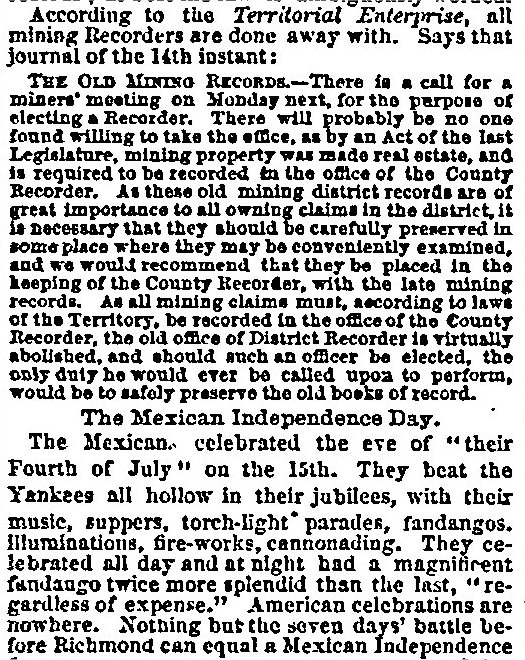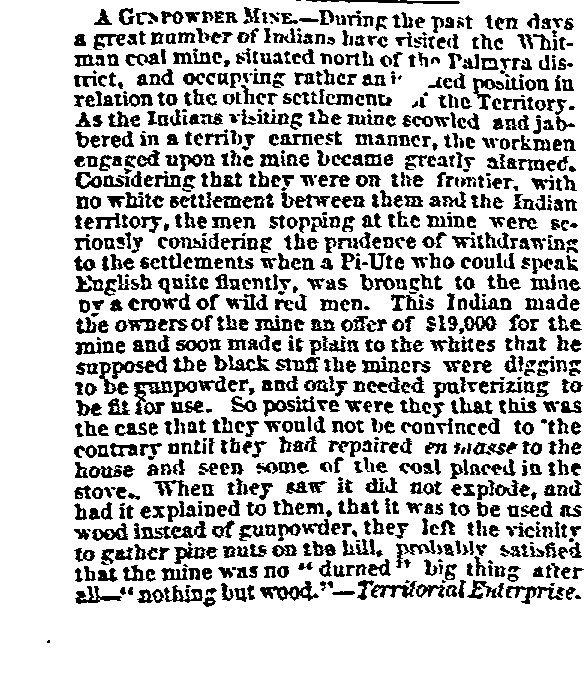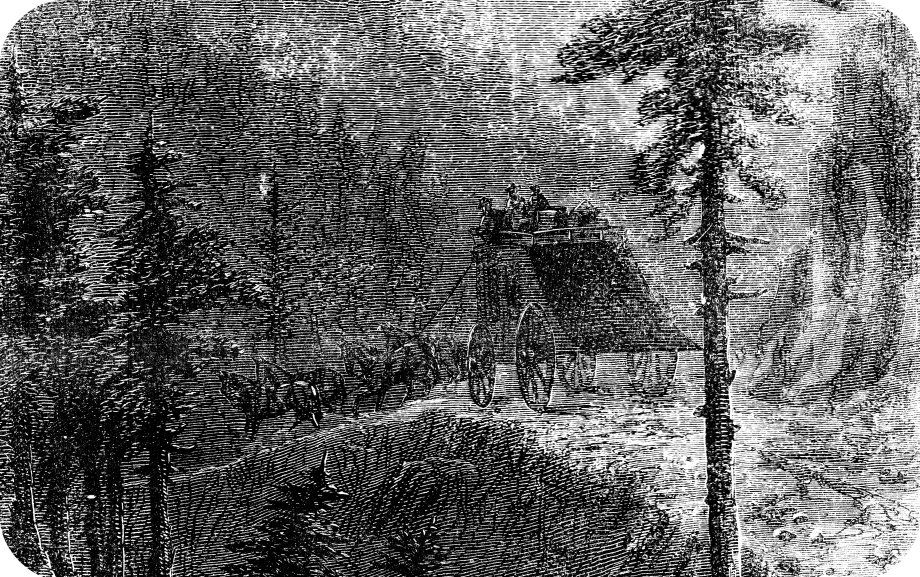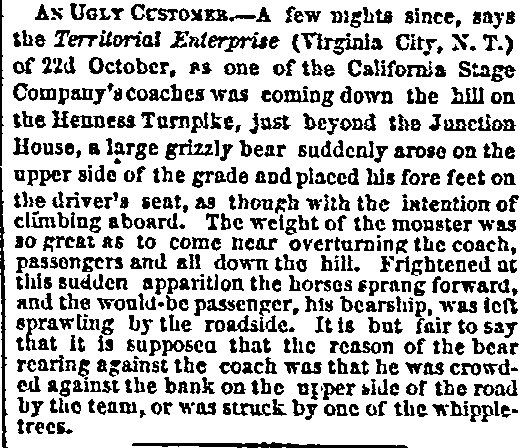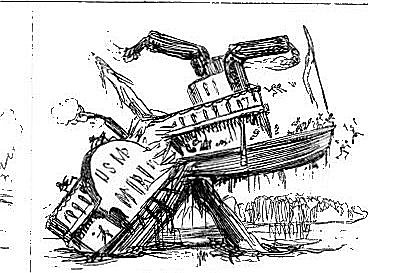By Robert E. Stewart
An entertaining and humorous segment of Mark Twain’s enduring book, Roughing It, involved living in Carson City in the fall of 1861.
Earlier that year, Abraham Lincoln had assumed the office of President, and among his duties was naming the leadership for the newly created Nevada Territory. These officials would create the government for the region that included the newly-discovered Silver Mines of the Comstock Lode.
For Governor, Lincoln appointed Secretary of State William Seward’s friend, James Warren Nye, of New York. For Secretary of the Territory—who would also function as acting governor in Nye’s absence—Lincoln named Attorney General Edward Bates’ friend Orion Clemens, then a printer in Keokuk, Iowa. The story of Orion’s brother is well known: Samuel Langhorne Clemens arrived in Carson City with his brother in August, 1861, and in January 1862 adopted the pen name “Mark Twain.”
Shortly after the Clemens brothers’ August, 1861 arrival in Carson City, Sam was rooming at Mrs. Margret Murphy’s boarding house. Also among those sleeping in the 14-bed barracks-style upstairs was Gov. Nye’s older brother, “Captain” John Nye.
Gov. Nye had said, before leaving the East, that his would be an administration made up of “border men”—men with experience living on the frontier of civilization. A few of the border men Nye had asked to fill those positions were living at Mrs. Murphy’s, waiting for the Territorial Legislature to enact the laws creating the positions of Treasurer, Auditor, county commissioners, justices of the peace, etc.
These were hardy men, used to keeping busy; they were not men who sat around and waited. In early August Capt. Nye, until recently a gold miner in California, organized “John Nye and Co.” The partners laid out a timber claim on the shore of Lake Tahoe which encompassed Skunk and Secret harbors, and extended up about a quarter mile past today’s Thunderbird Lodge. The land had not been surveyed by the General Land Office, and was thus not yet eligible for per-emption under federal laws.
One member, William (“Will”) Wagner, was a road-building engineer with the Lander Overland Emigrant Wagon Road in 1860. In that role Wagner also constructed the Rabbit Hole Springs reservoirs.
The Nye partnership was formed before Orion and Sam Clemens arrived in town, but a few days after the stage dropped them off in Carson City, they were living at Mrs. Murphy’s with some of the Nye claim partners. At dinner there, the men doubtless talked of the timber claim and Wagner’s plan to construct a toll road up King’s Canyon to Glenbrook, and then south to the California line. That fall, Nelson Murdock and George Warren, were finishing-up construction Augustus Pray’s sawmill at Glenbrook, then known as Walton’s Landing.
Wagner died suddenly in October, 1861. (The road laid out by Wagner was then built in 1863 by Butler Ives.) The Nye timber claim was formally surveyed and recorded with the Ormsby county (Carson City) recorder shortly after the county was organized in 1863. They had completed construction of a log cabin near Secret Creek. The site is clearly seen today on the recorded plat map of the survey, permanently on file at the Carson City Clerk-Recorder’s office.
The Nye partners based their claim on an anticipated need for timber from the Tahoe Basin. That need did not develop until about 1870, and by then the members had moved on to other employment.
But in September 1861 the men were anticipating the cash returns possible from their claim. Two of the non-brigade guests at Mrs. Murphy’s boarding house were Sam Clemens and John Kinney. Both having arrived after the Nye partnership was formed, they soon decided to make their own claim. According to Clemens’ later account, writing as Mark Twain n the classic book Roughing It, he wrote that they hiked up to Tahoe, located the Nye partnership’s skiff–he called them “The Brigade”—and rowed to the Brigade’s camp at what we today call Secret Harbor. “Three miles away was a sawmill and some workmen, but there were not fifteen other human beings throughout the wide circumference of the lake.” It was not yet a working sawmill. The lead workman at the new Pray sawmill under construction at Glenbrook was Nelson E. Murdock, a millwright who would later help write Nevada’s State Constitution.
Sam and John set the corner of their own claim on the Lake’s shoreline three miles north of the Brigade’s camp. That was in September. In October and November, the first Nevada Territorial Legislature defined the borders of the new territory’s counties. The Nye Brigade’s claim, mostly in Ormsby County, did extend into Washoe County. That meant the entire Clemens-Kinney claim was in Washoe county, and they would need to have the Washoe County Surveyor record their claim. But by the end of 1861, before Washoe County was organized, John Kinney was in Aurora, and Sam Clemens was in Unionville. Chopping down trees had turned out to involve a lot of work, and mining had claimed their interest. So their timber claim was never surveyed, and the two would-be timber barons, like most of the Nye partnership’s members, moved on.
Robert E. (Bob) Stewart has been a resident of Carson City since 1971, having moved here as Press Secretary and Administrative Assistant to Gov. Mike O’Callaghan. He remained in Carson while employed by the U.S. Bureau of Land Management in Reno. Now retired, he is recognized nationally as a scholar of Mark Twain’s years in Nevada.
